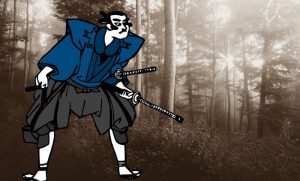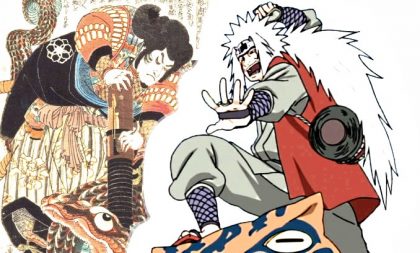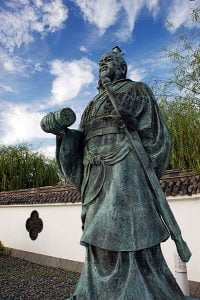Beneath the cloak of darkness, borrowing the moon’s light, the ninja slithers through the forest vegetation. Passing grey clouds cover the moon. Any ambient light that had existed was diminished, rendering the ninja’s sight useless.
How to see in the dark
Analysing his surroundings, the ninja reached into his clothes and retrieved the uchitake (a cylindrical shape fire-starter). He lights his pine reisin torch, allowing his immediate surroundings to illuminate, and continues to navigate into enemy terrain.
Contrary to the depictions in popular culture, the shinobi did in fact use torches to illuminate their surroundings during the night; albeit only in specific circumstances. It is emphasised in various manuals that fire of some form must be carried with the ninja. One must remember that ninja were human beings who possessed extraordinary skills within limits of the physical body.
Using light for night missions
In circumstances deemed necessary, fire and torches were used by these warriors of the night. And there were unwritten guidelines to help determine whether the use of light was required. These guidelines stemming from common sense are also used by modern militaries around the world.
1. Does the existing natural light allow for navigation, without getting lost?
2. Can the ninja see enough to safely avoid natural hazards (cliffs) and predators?
3.Does the light compromise the covert nature of the mission?
The first two guidelines need no explanation, while the last is slightly ambiguous. How would one determine if the use of light would alert the enemy?
To answer the question, an analysis of the environment and circumstances must be done.
For instance, stormy weather can obscure light from fire-torches. The enemy would therefore be none-the-wiser about the ongoing infiltration. In another example, an enemy within the castle grounds surrounded by dense forests is unlikely to detect light sources.
Where using light near the enemy territory would compromise the mission, the shinobi would use his sword as a probe in the darkness. This was done by drawing out the scabbard incompletely to the tip of the sword and moving it in front of him to feel in the darkness. The scabbard will balance on the tip of the blade so long as the ninja bites onto the cord tied to the scabbard. If ever, the makeshift probe encounters the enemy, the scabbard will be immediately dropped and the bare blade will meet the enemy instantaneously.
Fire and torches
The ninja made a wide variety of torches and were considered experts at making them. These torches were suitable for extensive travelling and followed a basic construction of hallowed wood filled with flammable material and a mix of charcoal, sulphur and potassium nitrate.
Most torches were lit with a tinderbox (flint and steel) or with the uchitake (a waterproof container within a bamboo tube that contains conserved smouldering ember).
It is interesting to note that the way a person’s torch burnt could alert a ninja as to whether that person too is a ninja. The range of torches made include waterproof types to the mystical Palm Flaring Fire.
Palm Flaring Fire
This clandestine technique was used to illuminate a room briefly to ensure it was empty. The very palm of the shinobi was the torch. Upon opening his palm, the flammable powder would be exposed to air, thereby causing it to ignite and flare with light.
Pine Resin Torch
This variant of torches enabled the ninja to break the torch into even smaller pieces. This created more light sources for the ninja and allowed him to adjust the light’s intensity.
Conclusion
The mastery of fire and weatherproofing light sources made many missions possible for the ninja. This was also one of the reasons the ninja were considered a formidable force within the darkness. And was their key of how to see in the dark.
Note: May contain outdated information






